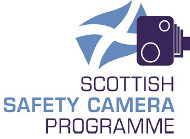6/20/2013
Scotland: Officials Scale Back Inflated Speed Camera Benefit ClaimsScotland delays release of speed camera report after statistics found to be inflated.

Officials in the United Kingdom have exaggerated the purported benefits of speed camera use and are now scaling back their claims. On Tuesday, Transport Scotland announced it was delaying the planned publication of its annual speed camera statistics brochure for four months in order to ensure the numbers were more realistic.
"The existing statistical bulletin shows accident and casualty data before and after a period of cameras enforcement," Transport Scotland statistician Jennifer McCahill said. "Users have requested further analysis showing the effect that cameras have had on these accident levels. The forthcoming bulletin will incorporate a section where a sample of sites will be selected and the effects of trend and regression to the mean will be allowed for, when trying to estimate the effect that safety cameras have had on road traffic accidents."
The agency is responding to the statistical critique drafted by Professor Mike Maher of the University of Leeds' Institute for Transport Studies. Maher examined the methods used in documenting the performance of 400 speed camera sites throughout the country. Maher noted that from 2001 to 2011, the number of fatal and serious injury collisions throughout the country fell by an average of 4 percent per year as a result of a number of factors, including improving automobile safety features and highway design.
"There seems no reason to doubt that the same trend would have occurred at camera sites," Maher wrote. "Therefore any estimate of the effect of cameras should take account of trend."
The very method used to justify the placement of a photo enforcement device essentially guarantees the statistics will indicate the program's "success" under the current methodology.
"When the decision to install a camera is based on a high number of collisions in the preceding period (typically three years), and this same period is used to provide the 'before' data in a before-after comparison, there is the danger of regression to the mean, as has been amply demonstrated in previous studies," Maher explained.
In 2009, the UK Statistics Authority ordered the UK Department for Transport (DfT) to stop inflating its speed camera claims. The British Medical Journal (BMJ) was first to show that, contrary to DfT's former assertion, injury accidents were not decreasing (view 2006 BMJ study). DfT claimed road injury rate fell from 85.9 per 100,000 in 1996 (before cameras) to 59.4 in 2004 (after cameras), but hospital admission records showed that the road injury rate actually increased slightly from 90.0 in 1996 to 91.1 in 2004.
Maher recommended Transport Scotland use the Empirical Bayes method to properly evaluate the statistical evidence by isolating the effect of cameras from other variables such as traffic volume and regression to the mean.
A copy of Professor Maher's critique is available in a 250k PDF file at the source link below.


